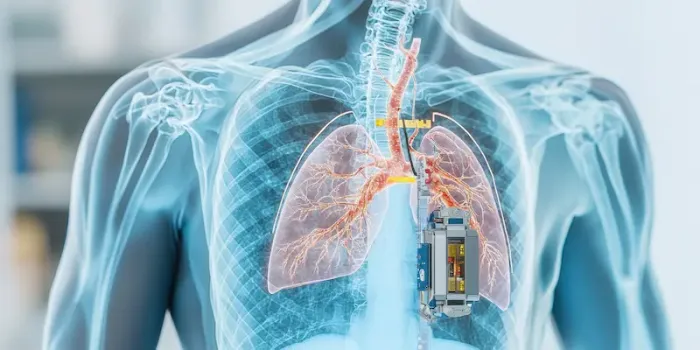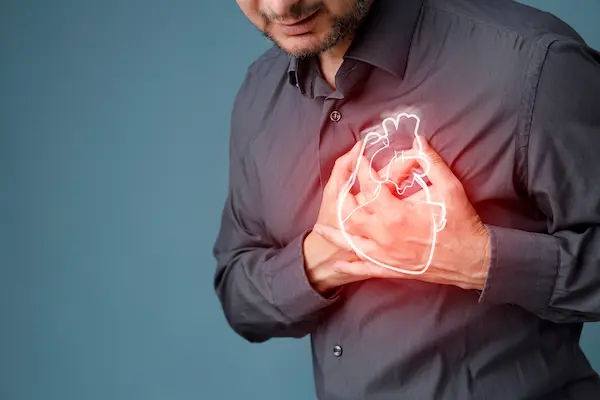Leadless Pacemakers: A New Hope in Heart Care
Discover how leadless pacemakers work, their benefits, and why they offer a safer, more convenient option for heart patients.

Written by Dr. Md Yusuf Shareef
Reviewed by Dr. Rohinipriyanka Pondugula MBBS
Last updated on 26th Sep, 2025

Introduction
For decades, pacemakers have been a lifeline for millions living with slow or irregular heartbeats. While effective, traditional devices come with a set of challenges: surgical scars, activity restrictions, and potential complications from the wires, or "leads," that connect to the heart. But what if there was a way to correct your heart's rhythm without major surgery, without visible scars, and without any wires at all? This is no longer a question for the future. Welcome to the era of leadless pacemakers, a breakthrough that represents a true new ray of hope for cardiac patients. This innovative technology, epitomised by devices like the Micra™ Transcatheter Pacing System, is revolutionising the field of cardiology. In this comprehensive guide, we will demystify this advanced medical technology, explore who can benefit from it, and walk you through what to expect, empowering you to have an informed conversation with your doctor about your heart health.
What is a Traditional Pacemaker and What Are Its Limitations?
A traditional pacemaker is a small, battery-powered device that sends electrical signals to your heart to help it beat at a normal rate. It has been the standard of care for conditions like bradycardia (a slow heartbeat) for over 50 years.
The Components: Generator, Leads, and Surgical Pocket
The system consists of two main parts:
1. The Pulse Generator: This is the "brain" of the pacemaker, containing the battery and electronic circuitry. It's typically implanted in a small pocket under the skin near the collarbone.
2. The Leads: These are insulated wires that are threaded through a vein to connect the generator to the heart muscle. They carry the electrical impulses from the generator to the heart.
Common Issues: Lead Fractures, Pocket Complications, and Infection
While life-saving, this design has inherent limitations. The leads and the surgical pocket are common sources of problems:
• Lead Fractures: Over time, leads can break or malfunction, requiring a complex surgical procedure to replace them.
• Pocket Complications: The pocket under the skin can become infected, painful, or cause skin erosion.
• Restrictions: Patients are often advised to avoid vigorous arm movements on the side of the implant to prevent lead displacement.
These limitations spurred the search for a better, safer solution, leading to the development of the leadless pacemaker.
Consult a Cardiologist and Electrophysiologist for the best advice
Introducing the Micra™: The Revolutionary Leadless Pacemaker
The Micra™ pacemaker is a monumental leap forward. It is the world's smallest pacemaker, about the size of a large vitamin capsule, and it functions entirely without leads.
How is the Micra™ Different? A Size and Design Comparison
Unlike a traditional system, the Micra™ is a single, self-contained unit. All the components, battery, generator, and electrodes are housed within its tiny frame. There is no chest incision and no pocket created under the skin. This minimalist approach addresses the most common drawbacks of traditional devices head-on, offering a less invasive cardiac pacing solution.
The Groundbreaking Implantation Procedure
The implantation process is significantly less invasive. Instead of chest surgery, the procedure is performed using a transcatheter implantation technique.
1. A cardiologist inserts a catheter (a thin, flexible tube) into a large vein in the groin, known as the femoral vein.
2. The Micra™ device is guided through the catheter and into the right ventricle of the heart.
3. Once in position, the device is securely attached to the heart wall using small, flexible tines.
4. The catheter is then removed, leaving only the tiny device inside the heart.
This entire procedure typically takes about 30 minutes, and because it doesn't involve a surgical pocket, the recovery time for a leadless pacemaker is often much faster.
Who is a Candidate for a Leadless Pacemaker?
This technology is not yet for everyone, but it is ideal for a specific subset of patients. If you experience symptoms like dizziness, fatigue, or fainting due to a slow heart rate, consulting a cardiologist is crucial. You can book a detailed consultation with a top cardiologist online with Apollo24|7 to discuss your symptoms and see if a leadless pacemaker is right for you.
Ideal Medical Conditions
The Micra™ is currently approved for patients who need single-chamber pacing. This makes it an excellent option for conditions like:
• Atrial Fibrillation with a Slow Heart Rate: For patients with persistent AFib who also have slow heart rhythms.
• Certain Types of Bradycardia: Where pacing is only needed in one chamber of the heart (the ventricle).
Patients at High Risk for Traditional Pacemaker Complications
It is also a preferred option for patients at high risk of infection, such as those with diabetes or compromised immune systems, and for those for whom lead placement is difficult or risky.
The Benefits of Choosing a Leadless Pacemaker
The advantages of this new technology are profound and directly impact a patient's quality of life.
No Visible Scar or Bulge Under the Skin
Since the device is implanted via the groin and sits entirely inside the heart, there is no scar on the chest and no visible bulge under the skin.
Reduced Risk of Infection and Complications
With no chest incision or device pocket, the risk of skin infection is drastically reduced. The absence of leads also eliminates all lead-related problems, which account for a majority of traditional pacemaker complications.
A Quicker Recovery and Return to Normal Life
Patients often experience a much shorter hospital stay, sometimes just one day and can return to their normal activities, including exercise, much sooner than with traditional surgery.
Potential Risks and Considerations
As with any medical procedure, it's important to understand the full picture. While the safety profile of leadless pacemakers is excellent based on clinical trials, potential risks include perforation of the heart wall or bleeding at the catheter insertion site. Furthermore, the long-term data, while promising, is still being collected as it is a relatively new technology. If your condition does not improve after device implantation, it is vital to follow up with your doctor.
Conclusion: Embracing a New Era of Heart Care
The development of the leadless pacemaker marks a pivotal moment in cardiac care. It addresses long-standing challenges and offers a safer, less invasive path for patients struggling with rhythm disorders. This technology truly provides a new ray of hope, promising not just longer life but a better quality of life with fewer restrictions and complications. If you or a loved one are facing the prospect of a pacemaker, it is more important than ever to be informed about all available options. Have an open discussion with your healthcare provider about whether this revolutionary technology could be the right choice for you. Taking an active role in your heart health is the first step toward a healthier future.
Consult a Cardiologist and Electrophysiologist for the best advice
Consult a Cardiologist and Electrophysiologist for the best advice
Dr Sumanth R
General Physician
2 Years • MBBS
Bengaluru
PRESTIGE SHANTHINIKETAN - SOCIETY CLINIC, Bengaluru

Dr. Anand Ravi
General Physician
2 Years • MBBS
Bengaluru
PRESTIGE SHANTHINIKETAN - SOCIETY CLINIC, Bengaluru

Dr. Ramalinga Reddy
General Physician
5 Years • MBBS MD General medicine
Bengaluru
PRESTIGE SHANTHINIKETAN - SOCIETY CLINIC, Bengaluru

Dr. Janjirala Seshivardhan
Cardiologist
7 Years • MBBS,DNB(GM),DM(Cardiology)
Manikonda Jagir
Apollo Clinic, Manikonda, Manikonda Jagir

Dr Nazneen Khan
Cardiologist
7 Years • M.B.B.S, M.D (MEDICINE), DrNB CARDIOLOGY
Pune
Apollo Clinic, Viman Nagar, Pune
Consult a Cardiologist and Electrophysiologist for the best advice
Dr Sumanth R
General Physician
2 Years • MBBS
Bengaluru
PRESTIGE SHANTHINIKETAN - SOCIETY CLINIC, Bengaluru

Dr. Anand Ravi
General Physician
2 Years • MBBS
Bengaluru
PRESTIGE SHANTHINIKETAN - SOCIETY CLINIC, Bengaluru

Dr. Ramalinga Reddy
General Physician
5 Years • MBBS MD General medicine
Bengaluru
PRESTIGE SHANTHINIKETAN - SOCIETY CLINIC, Bengaluru

Dr. Janjirala Seshivardhan
Cardiologist
7 Years • MBBS,DNB(GM),DM(Cardiology)
Manikonda Jagir
Apollo Clinic, Manikonda, Manikonda Jagir

Dr Nazneen Khan
Cardiologist
7 Years • M.B.B.S, M.D (MEDICINE), DrNB CARDIOLOGY
Pune
Apollo Clinic, Viman Nagar, Pune
More articles from Heart disease
Frequently Asked Questions
1. How long does the battery last in a leadless pacemaker?
The battery life of leadless pacemakers like the Micra™ is comparable to traditional devices, typically lasting 10-15 years depending on how much it is used.
2. Can I have an MRI with a leadless pacemaker?
Yes, most modern leadless pacemakers, including the Micra™, are designed to be MRI-safe under specific conditions. Always inform your radiologist and cardiologist before any scan.
3. What is the cost of a leadless pacemaker in India?
The cost of a leadless pacemaker is generally higher than a traditional system due to the advanced technology. The final cost depends on the hospital, doctor's fees, and insurance coverage. It's best to check with your hospital for a detailed estimate.
4. Is the device felt inside the heart?
No, patients do not feel the device once it is implanted.
5. What happens when the battery runs out?
When the battery depletes, the common procedure is to implant a new leadless pacemaker. The old device can typically be left in place and deactivated, as it is so small.




